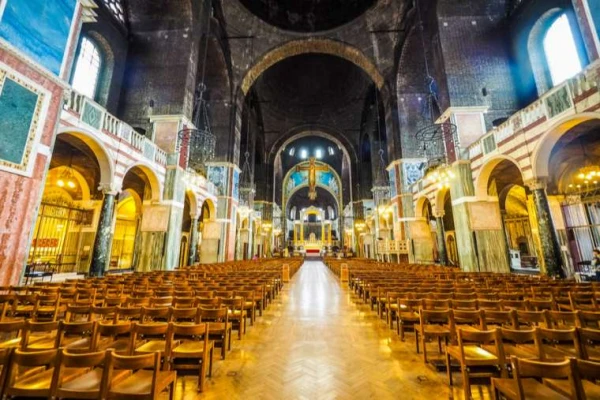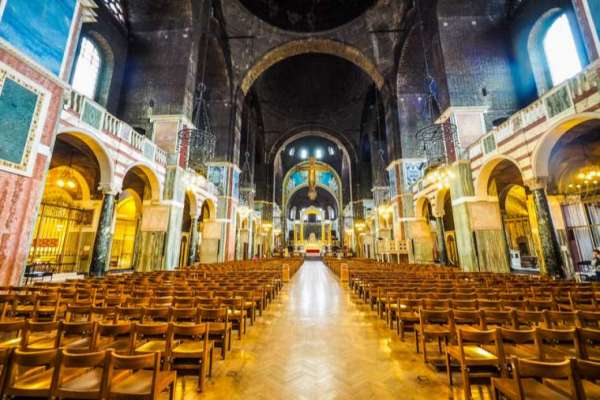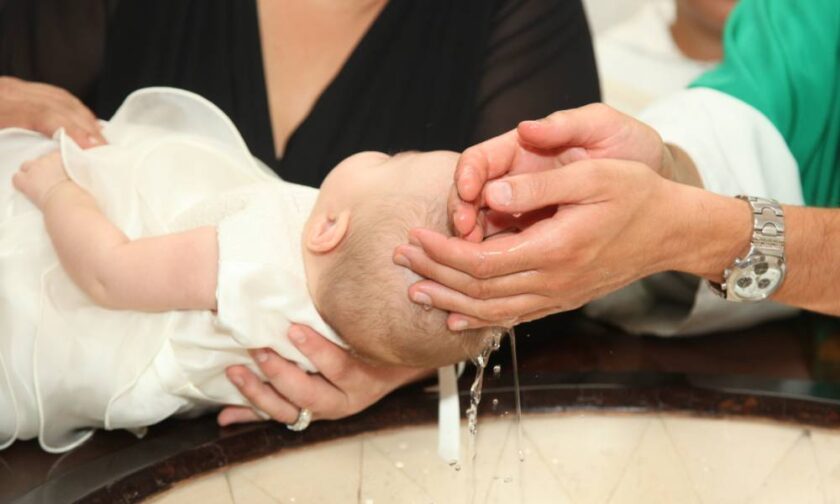
London, England, Apr 17, 2020 / 06:00 am (CNA).- The coronavirus crisis could have a “catastrophic effect” on the finances of England’s most prominent Catholic cathedral, officials have said.
An appeal for donations on the website of Westminster Cathedral, the mother church of Catholics in England and Wales, said the pandemic “has brought to the cathedral a very real threat to its financial stability”.
The cancelation of public Masses would significantly reduce the cathedral’s income, the statement explained.
The cost of running the cathedral is currently $3 million per year, or approximately $58,000 a week. The cathedral was already facing an operational shortfall of $7,500 per week before the crisis.
“As an organisation the income of which comes largely from voluntary donations, having to stop Masses is going to have a catastrophic effect on the cathedral’s finances,” the statement said.
The cathedral usually receives around $16,000 per week from offertory collections, including Sunday and weekday Masses. It also gains roughly $6,000 from votives. In addition, it generates income from a shop within the cathedral and a viewing gallery at the top of its bell tower.
“All of the cash offertory and much of the income from votives will disappear when there are no public Masses,” the statement said. “Furthermore, there will be no income from the cathedral shop or from the tower until the cathedral reopens.”
As a result, it said, the operational deficit was likely to rise to more than $25,000 per week “and there is little that the cathedral can do to stop this happening.”
“For, although the Cathedral’s income will disappear, much of its expenditure will very largely remain the same,” it said.
The cathedral noted that the British government’s furlough scheme would help it with staff costs. But it would still be required to meet the ongoing costs of maintaining the cathedral and an attached clergy house.
The cathedral, which is livestreaming Masses via the website churchservices.tv, urged supporters to consider helping it “through the dark and challenging weeks ahead,” either by making a one-off donation or by downloading a form from its website and making regular fixed payments to the cathedral via standing orders.
A spokesman said the cathedral authorities were encouraged by the response to the appeal.
The cathedral, which was opened in 1903, has long struggled financially. Recently officials installed contactless payment terminals and QR codes on seats in an effort to generate more income.
The cathedral also held a three-week planned giving campaign, encouraging parishioners to sign up for the Gift Aid scheme, enabling registered charities to reclaim tax on donations by UK taxpayers, and to set up standing orders.
Writing before the coronavirus crisis, in the February issue of the cathedral’s magazine Oremus, finance committee chair Linda McHugh said that if the cathedral could not cover its costs then it might have to reduce the number of Masses or “open for only a few hours each day.”
“What would that mean for those who rely on it as a haven for quiet prayer or for those homeless people for whom it is somewhere to go for warmth, peace and shelter?” she asked.
The neo-Byzantine style cathedral is a Grade I listed building, an official designation meaning that it is a “building of exceptional interest” and cannot be altered without the local planning authority’s permission. It is the seat of Cardinal Vincent Nichols of Westminster and home to the celebrated Westminster Cathedral Choir.
Former archbishops of Westminster are buried in the cathedral, along with notable historical figures such as the 18th-century English bishop Richard Challoner.
Pope John Paul II celebrated Mass at the cathedral in 1982, as did Pope Benedict XVI in 2010. Its full name is the Metropolitan Cathedral of the Precious Blood of Our Lord Jesus Christ.
* This article was originally published here






